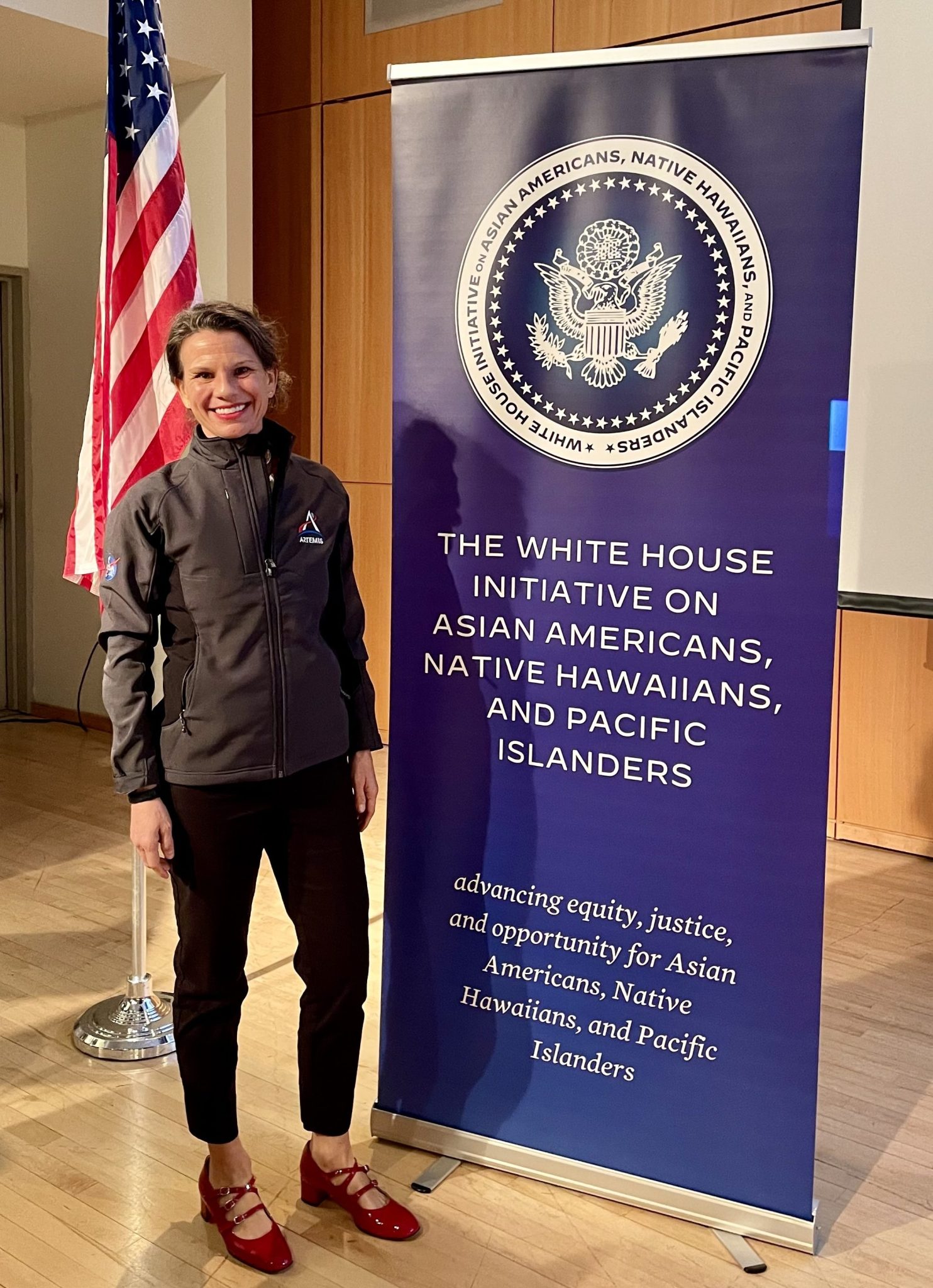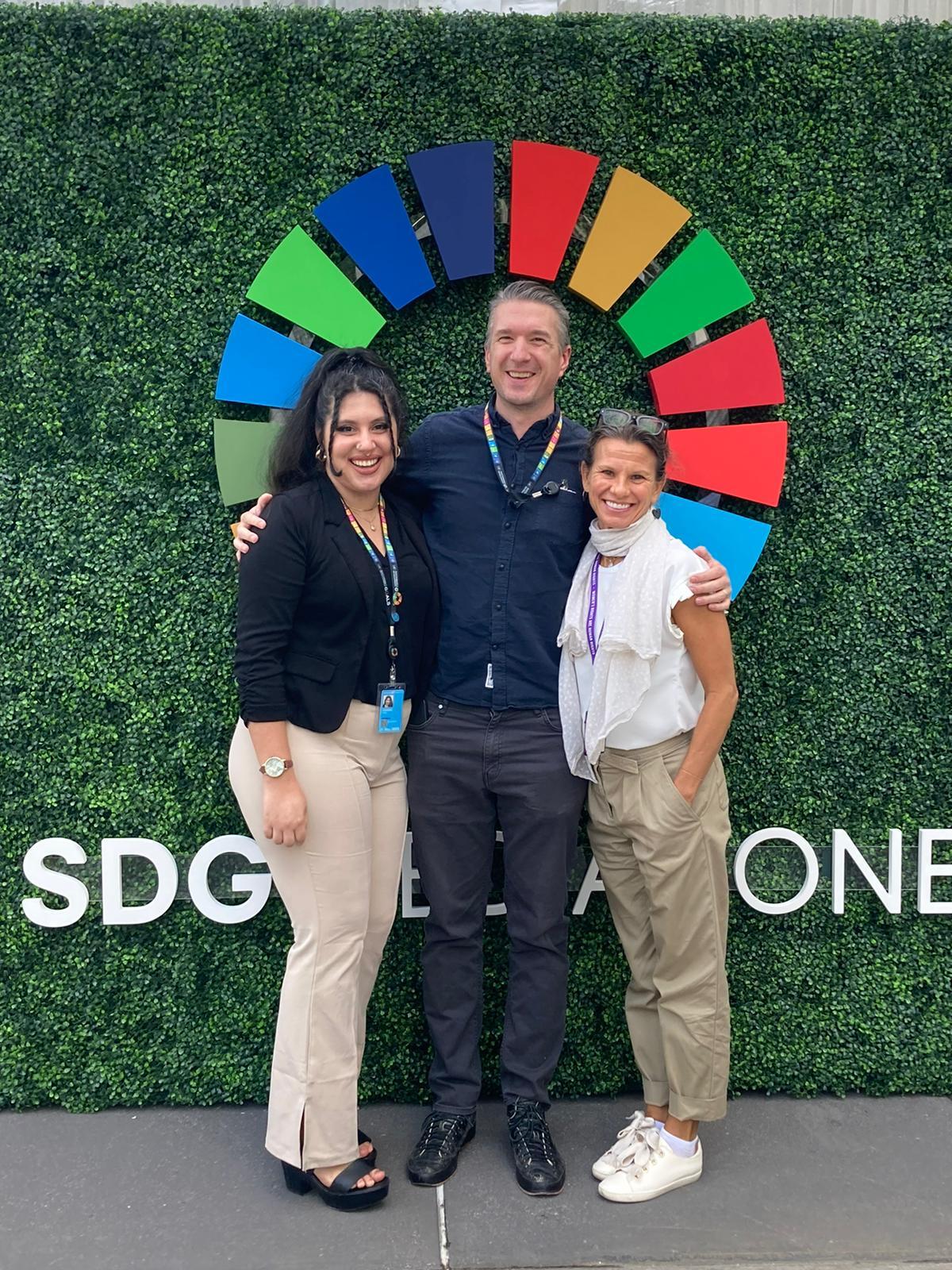At NASA's Goddard Institute for Space Studies in New York City, Jennifer Krottinger pairs her artistic vision with a passion for public service.
Name: Jennifer Krottinger
Title: Business Manager
Formal Job Classification: Business Management Specialist
Organization: Goddard Institute for Space Studies, Science and Exploration Directorate (Code 611)

What do you do and what is most interesting about your role here at Goddard?
I play a key role in decision making on institutional support, and provide authoritative, technical advice, and consultation on the laboratory's grants, cooperative agreements, personnel management, and procurement actions. Because no two days are alike, and I have the honor of working alongside brilliant, awesome, and equally humble people, my role is very interesting.
What is your educational background?
In 2002, I received my undergraduate degree, a bachelor's in business administration, from Midwestern State University in Wichita Falls, Texas. In 2008, I received my graduate degree, a master's in public administration, specializing in analysis and research, from Portland State University in Portland, Oregon. In 2019, I received another undergraduate degree, an associate of applied science in fashion design, from Parsons School of Design, School of Fashion, in New York, New York.
Please tell us about your service in Volunteers in Service to America (VISTA).
I worked for a small business during my undergrad and continued to after graduation. I was born into a family of entrepreneurs, maternally and paternally, and small business is in my DNA. I was ready for something different, yearning to "give back." I applied to VISTA, the domestic version of the Peace Corps. I was ultimately offered a few different positions, opting for the West Coast, leaving Texas in 2003 to begin VISTA service. I worked on economic development initiatives, in California and Oregon at the county, city, and state levels of government. I served for three-and-a-half years and fell in love with public service. Thinking I would pursue an MBA post-service, I decided to study for a master's in public administration instead, studying full-time while working part-time as a graduate research assistant for a department chair.
After graduating with my MPA, I returned to the private sector for a few years, and decided to take another leap of faith, answering the call of international service with the Peace Corps.
Please tell us about your experience in the Peace Corps.
From 2011 to 2015, I served in the Peace Corps, and my post was Sarteneja, Belize, Central America. My primary project was Sarteneja Alliance for Conservation and Development (SACD), a non-governmental organization working on communications ranging from basic skills, such as teaching Belizeans how to use Google, to more advanced, working with the SACD Board of Directors on the development and implementation of the communications plan.
My secondary project was helping 10 women found a women-owned, -operated, and -led sewing and handicraft cooperative, Las Sartenejeñas Cooperative. They make and sell indigenous artisan work and school uniforms for the local schools. The project won the 2013 Charlotte Daniels Champions of Change award, selected from world-wide projects, from World Connect, and the cooperative is still flourishing. These women inspire me to this day.
After completing Peace Corps service, I stayed in-country working on projects, with the cooperative, as the technical business development manager, working for almost a year, post-service.
And, in the summer of 2022, while working at GISS, I participated voluntarily in the Peace Corps Virtual Service Pilot Program (VSPP), in Namibia, to capitate Ngato Vocational Training Centre staff in developing a financially, viable business plan for the center, enabling greater sustainability, an increase in student enrollment capacity, and expansion of scholarship program for youth who come from traditionally marginalized and disadvantaged communities.
What inspired you to attend Parsons School of Design?
The women at the cooperative were a great catalyst for me. Since I was five years old, I wanted to be a fashion designer, and it was time. The opportunity was presenting itself and working with the women fueled the motivation. It was the education I always wanted and deserved, and decided to go for it.
I returned to Texas in June of 2015 from Belize, and moved to New York City in July 2015. In August 2015, I started my position with the Small Business Administration Region II, New Jersey District Office, later transferring to the New York Metro District Office, and Parsons.
It was a tall order to work full time, while adapting back to the United States, let alone coming from a rural, remote village of about 3,500, to a city of about 8.7 million, and attend Parsons part time which was rigorous and grueling, with little to no fashion design experience. I loved my time at Parsons, learning a lot about myself, the grit and the gumption, including how strong I really was and how to successfully manage priorities, attaining almost straight A's, graduating with top honors.
What did you do for the Small Business Administration (SBA)?
From 2015 to 2020, I worked at SBA, in Region II District Offices located in Newark, New Jersey, and New York City in government contracting and business development. The position as a business opportunity specialist allowed me to continue working cross-culturally with socioeconomic groups through managing portfolios of socially and economically disadvantaged small businesses, participating in federal government contract certification programs such as 8(a), Women Owned Small Business (WOSB), HUBZone, Veteran Owned Small Business (VOSB) and other certifications offered, providing technical assistance on the development of comprehensive business plans including robust financial planning. I also served as a district office technical representative for the Women's Business Centers funded by SBA.
Why did you come to GISS?
In May 2020, I landed at GISS. NASA has always been an aspiration for me. One of my heroes is Katherine Goble Johnson, a NASA mathematician and "Hidden Figure." One of my favorite quotes of hers is, "I'm always interested in learning something new." I hold this quote near and dear to my heart; growth and learning are two of my values. I included this quote and explained its importance on my NASA application. If you are always learning something new, you are continuously improving and growing.
What do you do at GISS?
Every day is different, and as mentioned earlier, no two days are alike. My major duties are program management and coordination of GISS strategic planning activities, oversight of GISS partnership agreements and procurement duties as the contracting officer representative (COR). This tends to involve problem-solving, working through and undoing complexities, establishing and refining policies and procedures, providing guidance and technical assistance, implementing innovative and creative approaches, and a lot of listening. I'm also one of the founding members of the newly established GISS DEIA Committee and serve as a vice co-chair for the Women's Employee Resource Group and Network (WEN) at NASA's Goddard Space Flight Center.
What is the coolest part about working at GISS?
Working at GISS is truly the coolest part, because again, NASA was an aspiration and achieving this, well sometimes I feel like pinching myself, ensuring its real. Also working directly and alongside Gavin Schmidt, the GISS director, and Ron Miller, the GISS deputy director, two incredibly brilliant and people-first leaders, who demonstrate everyday humility and humanity in leadership. For example, during the pandemic, when there was civil unrest across the country, Gavin told everyone at the weekly staff meeting that it was OK not to be OK, normalizing the taboo.
What are you currently doing for the United Nations?
The third goal of Peace Corps is to "help promote a better understanding of other peoples on the part of Americans," bringing back the country of service, to the United States. In March 2023, I became a representative for the Economic and Social Council (ECOSOC) of the United Nations. Five Returned Peace Corps Volunteers, are voluntarily consulting on addressing worldwide poverty and the 17 Sustainable Development Goals (SDG). My focus is SDG 5 Gender Equality, SDG 8 Decent Work and Economic Growth, and SDG 10 Reduced Inequalities. The consultancy involves attending UN meetings, summits, side events, briefings, and official ECOSOC written and oral statements.

What do you do for fun?
In January 2023, I launched my own fashion brand of prêt-à-couture garments and accessories with a focus on creative endeavors. It's a refinement and a lifetime work-in-progress. I lose all track of time in fashion and the creative - from mood boards, to color theory, to fashion history, to textiles, to the business aspect. Right now, I love learning about colors and am currently reading "The Secret Life of Color," which is explaining all the different histories of color.






